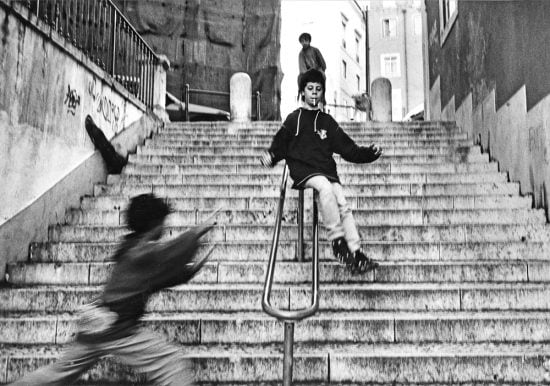5 Simple Techniques For Street Photographers
5 Simple Techniques For Street Photographers
Blog Article
The smart Trick of Street Photographers That Nobody is Discussing
Table of ContentsThe Only Guide for Street PhotographersAll About Street PhotographersStreet Photographers for BeginnersAll about Street PhotographersSome Known Details About Street Photographers
A category of digital photography that documents day-to-day life in a public area. The actual publicness of the setting allows the professional photographer to take honest photos of unfamiliar people, typically without their understanding. Street digital photographers do not always have a social purpose in mind, yet they like to isolate and catch moments which may otherwise go unnoticed (Street Photographers).Though he was affected by numerous of those that influenced the road photographers of the 1950s and '60s, he was not primarily thinking about capturing the spirit of the road. The impulse to aesthetically document people in public started with 19th-century painters such as Edgar Degas, douard Manet, and Henri de Toulouse-Lautrec, who functioned side by side with photographers trying to catch the significance of metropolitan life.
As a result of the somewhat primitive technology offered to him and the lengthy direct exposure time required, he had a hard time to catch the stress of the Paris roads. He experimented with a series of photographic techniques, trying to locate one that would certainly permit him to capture movement without a blur, and he found some success with the calotype, patented in 1841 by William Henry Fox Talbot. Unlike Atget, digital photographer Charles Marville was hired by the city of Paris to create an encyclopaedic file of Haussmann's metropolitan planning project as it unfolded, thus old and new Paris. While the professional photographers' topic was essentially the same, the results were significantly various, showing the effect of the professional photographer's bent on the character of the pictures he produced.
Given the fine high quality of his photographs and the breadth of product, designers and artists often acquired Atget's prints to use as reference for their own work, though commercial passions were hardly his main inspiration. Rather, he was driven to photo every last remnant of the Paris he loved.
A Biased View of Street Photographers
They reveal the city via his eyes. His work and fundamental understanding of digital photography as an art type worked as ideas to generations of digital photographers that complied with. The next generation of road photographers, though they likely did not describe themselves because of this, was introduced by the photojournalism of Hungarian-born professional photographer Andr Kertsz.
Unlike his peers, Brassa used a larger-format Voigtlnder cam with a much longer exposure time, requiring him to be a lot more computed and thoughtful in his practice than he may have been if utilizing a Leica.
Cartier-Bresson was a champion of the Leica video camera and among the initial professional photographers to optimize its capacities. The Leica allowed the professional photographer to interact with the surroundings and to record moments as they happened. Its fairly little dimension additionally aided the professional photographer discolor into the history, which was Cartier-Bresson's favored strategy.
Street Photographers Things To Know Before You Get This
It is because of this fundamental understanding of the art of image taking that he is often attributed with discovering the tool around once again approximately a century considering that its creation. He look at this site took photos for more than a half century and influenced generations of digital photographers to trust their eye and intuition in the moment.
These are the questions I shall attempt to best site respond to: And after that I'll leave you with my very own definition of street photography. Yes, we do. Allow's kick off with specifying what an interpretation is: According to (Street Photographers) it is: "The act of specifying, or of making something certain, distinct, or clear"
No, definitely not. The term is both restricting and deceiving. Seems like a road digital photography ought to be images of a streets best?! And all road digital photographers, besides a tiny number of absolute beginners, click to read will totally appreciate that a road is not the essential part to street photography, and really if it's a photo of a road with maybe a couple of dull individuals doing absolutely nothing of interest, that's not road photography that's a photo of a road.
What Does Street Photographers Do?
He makes a legitimate point do not you assume? Nevertheless, while I concur with him I'm not certain "honest public photography" will catch on (although I do type of like the term "honest digital photography") because "road digital photography" has actually been around for a long period of time, with lots of masters' names affixed to it, so I think the term is here to stay.
You can fire at the beach, at a festival, in a street, in a park, in a piazza, in a coffee shop, at a museum or art gallery, in a city terminal, at an occasion, on a bridge, under a bridge ...
Yes, I'm afraid we scared no choice! Without regulations we can not have a definition, and without a meaning we don't have a style, and without a style we do not have anything to define what we do, and so we are stuck in a "guidelines meaning style" loophole!
Street Photographers Things To Know Before You Buy

Report this page